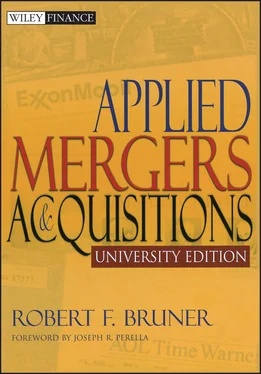EXHIBIT 5.4 Seventeen Largest Cross-Border Deals, 1997–2002
| Date Announced |
Target Name |
Target Nation |
Acquirer Name |
Acquirer Nation |
Transaction Value ($ Millions) |
Enterprise Value ($ Millions) |
Equity Value ($ Millions) |
Asset Value ($ Millions) |
| 11/14/99 |
Mannesmann AG |
Germany |
Vodafone AirTouch PLC |
U.K. |
202,785 |
180,033 |
179,861 |
21,442 |
| 4/18/99 |
Telecom Italia SpA |
Italy |
Deutsche Telekom AG |
Germany |
81,528 |
74,613 |
66,801 |
52,744 |
| 1/18/99 |
AirTouch Communications |
U.S. |
Vodafone Group PLC |
U.K. |
60,287 |
65,770 |
60,212 |
17,262 |
| 8/11/98 |
Amoco Corp. |
U.S. |
British Petroleum Co. PLC |
U.K. |
48,174 |
54,768 |
47,902 |
32,274 |
| 5/30/00 |
Orange PLC (Mannesmann AG) |
U.K. |
France Telecom SA |
France |
45,967 |
N/A |
N/A |
2,901 |
| 5/17/99 |
US WEST Inc. |
U.S. |
Global Crossing Ltd. |
Bermuda |
41,105 |
51,097 |
41,098 |
18,709 |
| 5/7/98 |
Chrysler Corp. |
U.S. |
Daimler-Benz AG |
Germany |
40,467 |
49,377 |
40,467 |
64,256 |
| 6/20/00 |
Seagram Co. Ltd. |
Canada |
Vivendi SA |
France |
40,428 |
38,725 |
29,771 |
34,921 |
| 12/9/98 |
Astra AB |
Sweden |
Zeneca Group PLC |
U.K. |
34,637 |
31,787 |
34,637 |
7,841 |
| 10/21/99 |
Orange PLC |
U.K. |
Mannesmann AG |
Germany |
32,595 |
34,214 |
31,489 |
2,901 |
| 4/1/99 |
ARCO |
U.S. |
BP Amoco PLC |
U.K. |
27,224 |
33,702 |
27,224 |
25,199 |
| 5/2/00 |
Bestfoods |
U.S. |
Unilever PLC |
U.K. |
25,065 |
23,529 |
20,895 |
6,209 |
| 5/17/99 |
Hoechst AG |
Germany |
Rhone-Poulenc SA |
France |
21,918 |
28,526 |
21,917 |
33,338 |
| 11/16/98 |
Rhône-Poulenc SA— Life Sciences |
France |
Hoechst AG—Life Sciences Divs. |
Germany |
21,223 |
N/A |
N/A |
N/A |
| 4/17/00 |
Allied Zurich PLC |
U.K. |
Zurich Allied AG |
Switzerland |
19,399 |
21,409 |
19,384 |
87,552 |
| 11/1/96 |
MCI Communications Corp. |
U.S. |
British Telecom PLC |
U.K. |
18,889 |
27,272 |
23,328 |
19,301 |
| 10/13/97 |
BAT Industries PLC-Financial |
U.K. |
Zurich Versicherungs GmbH |
Switzerland |
18,355 |
N/A |
N/A |
N/A |
Note: Size judged on the basis of transaction value in millions of U.S. dollars.
Source: Thomson Securities Data Corporation, Mergers and Acquisitions Database.
Reduce Tax Expense through Arbitrage across Different Tax Jurisdictions
Marginal corporate tax rates vary dramatically across the globe. In January 2002, they ranged from a low of 16 percent in Hong Kong and Chile to a high of 42 percent in Sri Lanka with a mean of 31.39 percent for OECD countries (see KMPG (2002)). Some have argued that this disparity permits multinational corporations to shift operations globally in ways that profitably arbitrages away from high-tax jurisdictions and toward lower-tax jurisdictions. 10 This is consistent with anecdotal evidence from practitioners (especially chief financial officers) about the importance of tax considerations in investment decisions. Nevertheless, empirical research at best gives mixed support for this motive. 11
Reduce Risk through Diversification
If economic activity across countries is less than perfectly correlated, geographic diversification can reduce risk. This is a straightforward extension of modern portfolio theory. For instance, Adler and Dumas (1975) argued that international diversification pays when capital markets are not fully integrated. Whereas correlations among stock returns within a country can be high, correlations across countries are highly variable, and can be quite low or even negative. Exhibit 5.5presents equity market correlations between the United States and various emerging markets countries. Rouwenhorst (1999) reported that from 1970 to 1998 the average correlation between index returns in Japan and the United States was 25 percent; between the United Kingdom and United States, it was 50 percent. Explanations for such variability across countries could be differing degrees of economic development and integration with global markets. 12
Even though local market volatilities might be high, a low correlation with that market might make it attractive to invest there. This is the chief argument in favor of global diversification of equity investing. Madura and Whyte (1990) argued that “differences in characteristics between real assets and financial assets can cause different degrees of diversification benefits. For example, real sectors can cause different degrees of diversification than foreign financial sectors will offer greater potential diversification benefits if those sectors can be penetrated.” ( Page 75) But does this translate into benefits for shareholders at the level of corporate investing? Some evidence suggests that the share prices of multinational corporations (MNCs) reflect well the geographic diversification, while other studies suggest that MNCs do not provide all the benefits of direct investment in foreign securities. 13 Fatemi (1984) compared MNCs with purely domestic firms, and found that returns on MNCs fluctuate less than domestic firms, that the betas of MNCs are more stable than domestic firms. Thus, risk reduction through geographical diversification seems to work. Fatemi also reported that risk-adjusted abnormal returns for MNCs are similar to domestic firms. Mikhail and Shawky (1979) and Errunza and Senbet (1981) found that the degree of international presence has a positive effect on excess returns. Doukas and Travlos (1988) reported that investor reaction to news of entry into a new foreign market is positive and significant, and most pronounced when the entry is into an emerging market country.
EXHIBIT 5.5 Emerging Market Correlations with U.S. Market
|
1976–1985 |
1985–1992 |
1995–1999 |
| Argentina |
3% |
10% |
52% |
| Brazil |
–7% |
13% |
48% |
| Chile |
–11% |
32% |
46% |
| Mexico |
13% |
49% |
60% |
| Thailand |
–9% |
43% |
53% |
Source of data: Standard & Poor’s/International Finance Corporation, “The S&P Emerging Market Indices: Methodologies, Definitions, and Practices,” February 2000, page 32.
Is risk reduced more effectively by diversifying across countries or across global industries? 14 Until the mid-1990s, low correlations among countries’ stock markets led to the conventional wisdom that much of the variability in returns from global investing stemmed from country choice. Marber (1998, p. 172) reported the findings of Barr Rosenberg Associates and the International Finance Corporation (IFC), who studied the extent to which choices about country, industry, and specific firm explained cross-sectional variation in global equity returns. They estimated the percent of returns variance explained by country, industry, and stock-specific factors for investments in developed markets and emerging markets. The results of the study, summarized in Exhibit 5.6, are that industry factors are dominant in developed countries and country factors are dominant in emerging countries. Other studies 15 show that country choices are very important, if not the most important, drivers of returns performance. Solnik (1991, p. 360) reported a study by Frank Russell Company of investment activities of international managers, finding that on average the manager puts 50 percent of resources into country analysis, 15 percent into industry analysis, and 35 percent into company analysis. But recent research has suggested that growing integration of the global equity market and the rising multinationality of companies elevate the importance of industry and firm-specific factors. However, other research suggests that country choice remains of preeminent importance. The relative significance of industry and country persists as a debate at the frontier of empirical finance. Either way, country choice will remain a material factor for some time to come. The global M&A analyst will seek to diversify across both countries and industries. 16
Читать дальше












